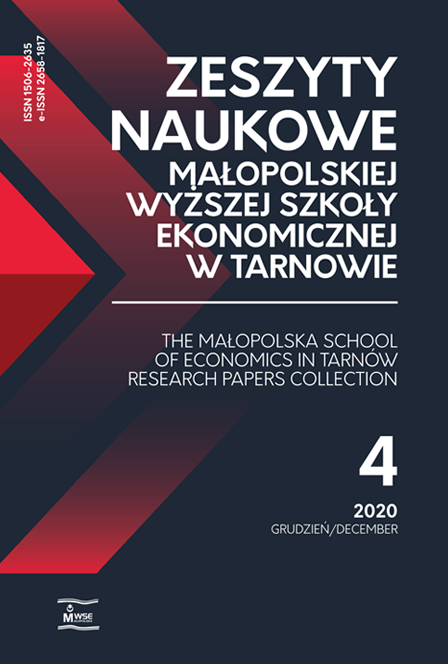Abstract
Innovation is a collection of unique projects, portfolios or project programmes. Current changes are influenced by phenomena in the organization and its environment. We continue to ask ourselves, especially during the pandemic crisis, how to build the trust and safety of project teams if the assumptions made, which had previously been undisputed, become a challenge. The aim of the article is to identify the limitations and barriers that accompany project teams during the implementation of innovations and to present methods for overcoming them. To achieve this goal, a proposition was prepared for our own diagnostic tools, paying particular attention to the phenomenon of priming in the design and dissemination of innovations. The factors determining the effectiveness of project handover between teams were also selected. According to the author, priming is the removal of obstacles to making a transition in innovative projects. The author’s presented method of assessing internal stimuli determines the functioning of project teams. The article adopts the thesis that the effectiveness of the handing over of innovative projects depends on the preparation of project teams to fulfill this mission in the company. Based on the conclusions of the discussion, the handing over of an innovative project is the fulfillment of stakeholder expectations in accordance with the criteria of the feasibility, desirability and viability of the project. To achieve this, the (transferor/ user) teams should have a common understanding of the final product design requirements and expected quality.
References
Association for Project Management. (2017). How can we hand over project better. Buckinghamshire: APM Research Fund Series.
View in Google Scholar
Axelos. (2014). Prince2. Skuteczne zarządzanie projektami. Londyn: TSO. ISBN 9780113312245.
View in Google Scholar
Bargh, J. A., (1999). Automatyzmy dnia powszedniego. Czasopismo Psychologiczne, 5(3), 209–256.
View in Google Scholar
Beckman, S. L., Barry, M. (2007). Innovation as a learning process: Embedding design thinking. California Management Review, 50(1), 25–56. DOI: 10.2307/41166415.
View in Google Scholar
Brown, J. (2018). How to hand off an innovation project from one team to another [online, accessed 2020-10-20]. Harvard Business Review. Retrieved from: https://hbr.org/2018/08/how-to-hand-off-an-innovation-project-from-one-team-to-another.
View in Google Scholar
Cadle, J., Yeates, D. (2008). Project management for information systems. 5th ed. Harlow: Pearson Education Limited. ISBN 9780132068581.
View in Google Scholar
Furr, N., Dyer, J. (2014). Choose the right innovation method at the right time [online, accessed 2020-10-20]. Harvard Business Review. Retrieved from: https://hbr.org/2014/12/choose-the-right-innovation-method-at-the-right-time.
View in Google Scholar
Hansen, T. M., Birkinshaw, J. (2007). The innovation value chain. Harvard Business Review. June.
View in Google Scholar
Hargadon, A., Sutton, I. R. (2006). Twoja firma też może stać się fabryką innowacji. In: W. Ch. Kim (ed.). Zarządzanie innowacją. Transl. by T. Rzychoń. Gliwice: Helion. ISBN 8373619046.
View in Google Scholar
Highsmith, J. (2010). Agile project management: Creating innovative products. 2nd ed. Upper Saddle River, NJ : Addison-Wesley. ISBN 9780321658395.
View in Google Scholar
IPMA. (2006). ICB-IPMA Competence Baseline Version 3.0. Nijerk: International Project Management Association. ISBN 0955321301.
View in Google Scholar
Karyłowski, J. J., Wallace, H., Motes, M., van Liempd, D., Eicher, S. (1999). Próba wykorzystania techniki torowania (priming) do badania kategoryzacji społecznej. Przegląd Psychologiczny, 42(1–2), 111–120.
View in Google Scholar
Khan, A. S., Kajko-Mattsson, M. (2010). Demarcating the scope of a handover process. In: Fifth International Conference on Software Engineering Advances (pp. 244–251). ISBN 9781424477883. DOI: 10.1109/ICSEA.2010.44.
View in Google Scholar
Kwintowski, A. (2015). Samoocena jako narzędzie doskonalenia. Prace Naukowe Uniwersytetu Ekonomicznego we Wrocławiu, 376, 346–356. DOI: 10.15611/pn.2015.376.25.
View in Google Scholar
Langley, J. D., Pals, N., Ortt, J. R., Bijmolt, T. H. A. (2009). Early prediction of the market demand for major innovations. European Journal of Innovation, 12(1), 5–24. 10.1108/14601060910928157.
View in Google Scholar
McIntosh, S. A., (2017). The importance of project handover documentation [online, accessed: 2020-11-17]. Retrieved from: http://www.long-intl.com/articles/Long_Intl_The_Importance_of_Proj_Handover_Docs.pdf.
View in Google Scholar
OGC. (2005). Managing successful projects with PRINCE2. London: The Stationery Office. ISBN 978-0113309474.
View in Google Scholar
Priming (psychology). (2020). In: Wikipedia. The Free Encyclopedia [online, accessed: 2020-11-30]. Retrieved from: https://en.wikipedia.org/wiki/Priming_(psychology).
View in Google Scholar
Sońta-Drączkowska, E. (2018). Zarządzanie projektami we wdrażaniu innowacji. Warszawa: Polskie Wydawnictwo Ekonomiczne. ISBN 9788320823264.
View in Google Scholar
Thirion, C. (2018). Effective handover of projects to operations teams [online, accessed: 2020-11-17]. Retrieved from: https://www.ownerteamconsult.com/wp-content/uploads/2020/04/Insight-0Article-49-Handover-to-Operations-Teams.pdf.
View in Google Scholar
van Heerden, F. J., Steyn, J. W., van der Walt, D. (2015). Programme management for owner teams: A practical guide to what you need to know. Vaalpark: OTC Publications. ISBN 9780620658379.
View in Google Scholar

This work is licensed under a Creative Commons Attribution-NonCommercial-NoDerivatives 4.0 International License.

